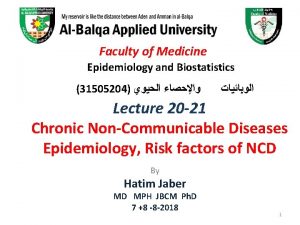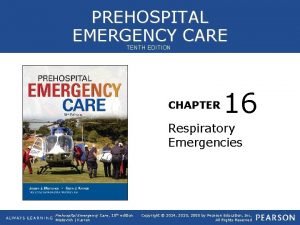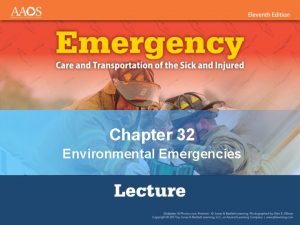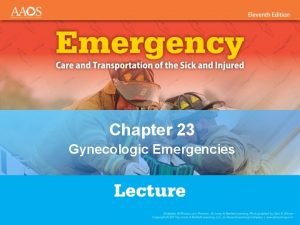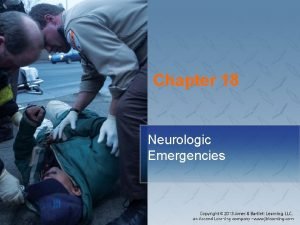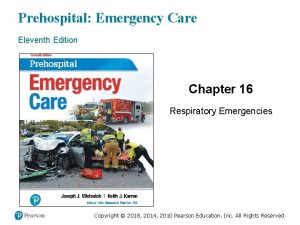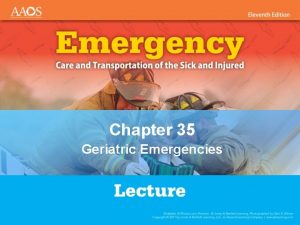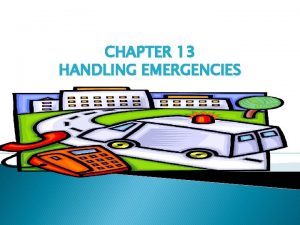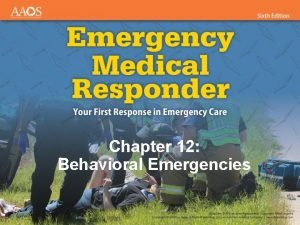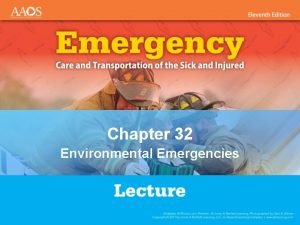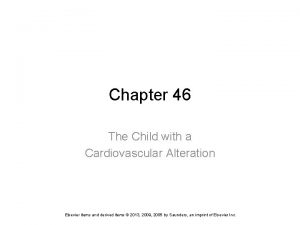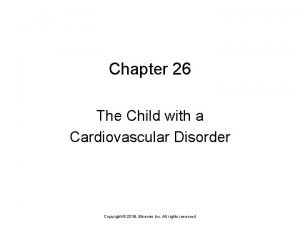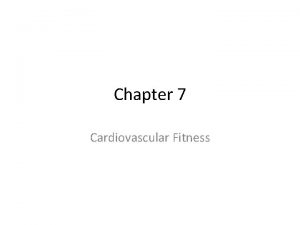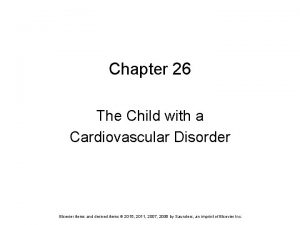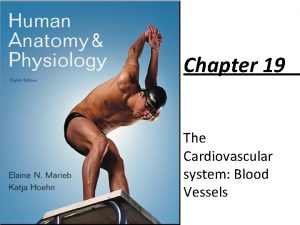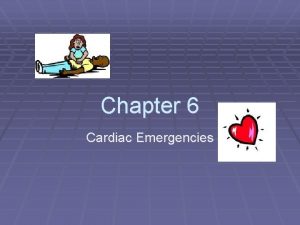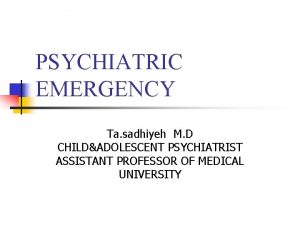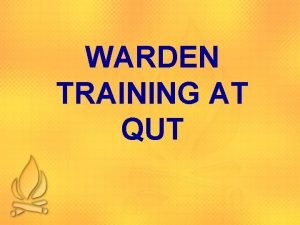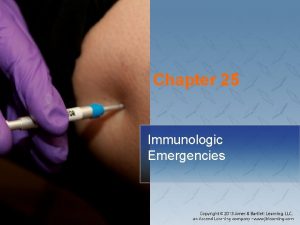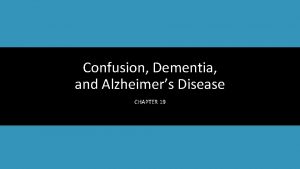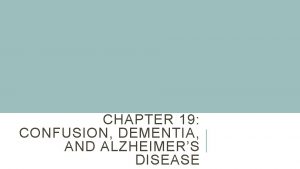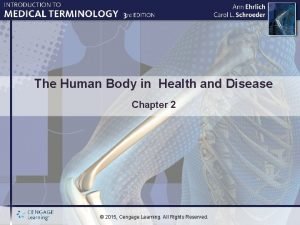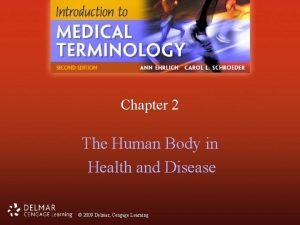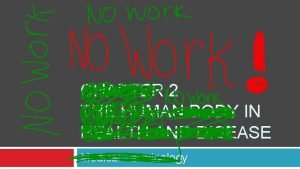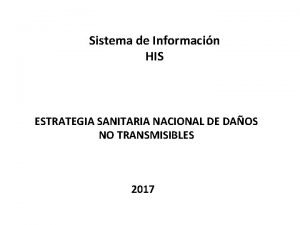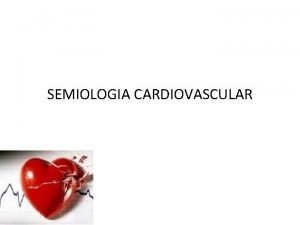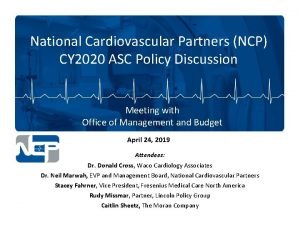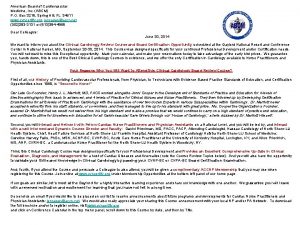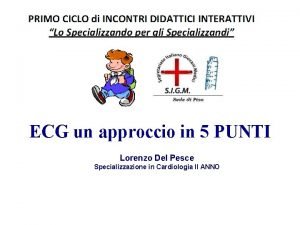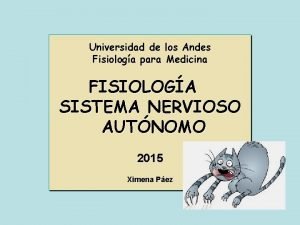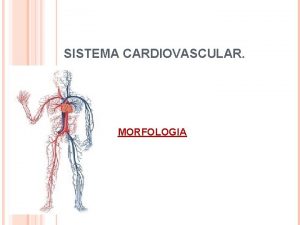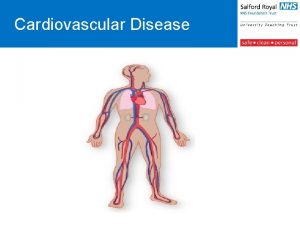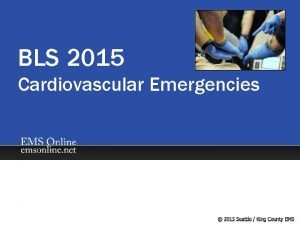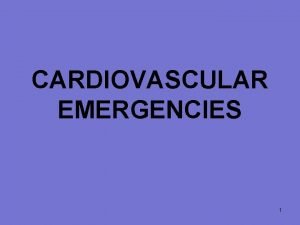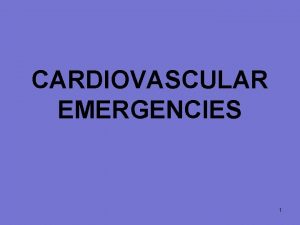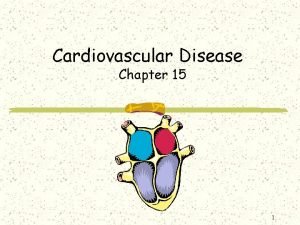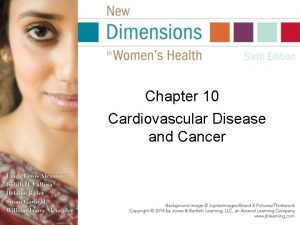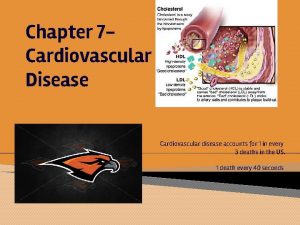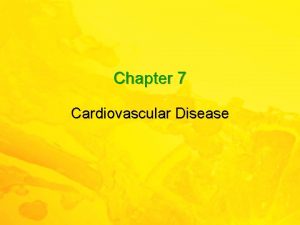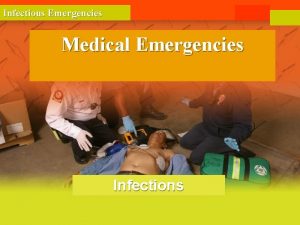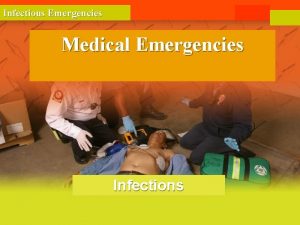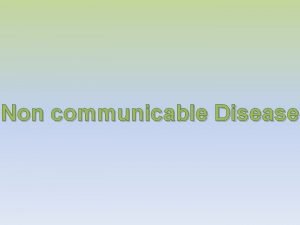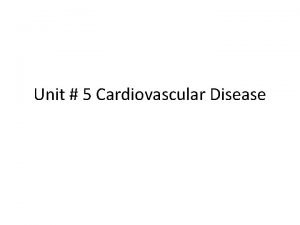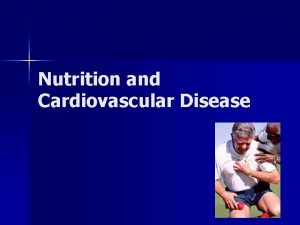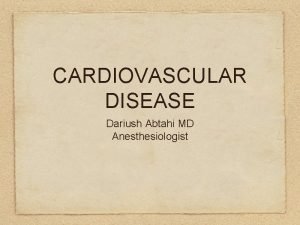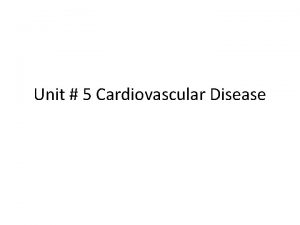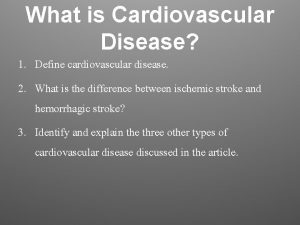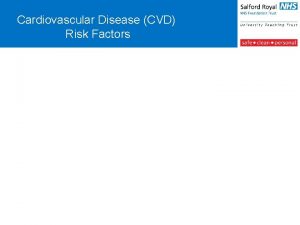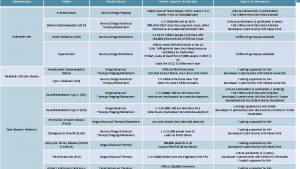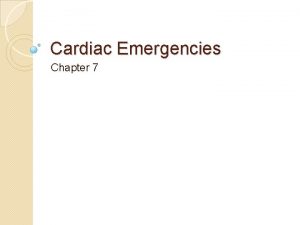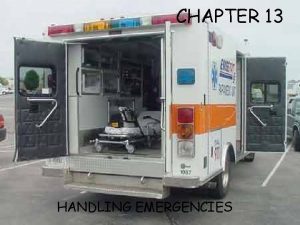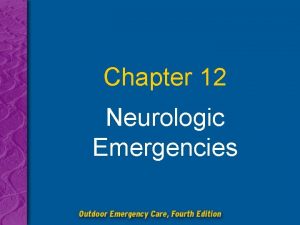Chapter 14 Cardiovascular Emergencies Cardiovascular Emergencies Cardiovascular disease

































































- Slides: 65

Chapter 14 Cardiovascular Emergencies

Cardiovascular Emergencies • Cardiovascular disease has been leading killer of Americans since 1900. • Accounts for 1 of every 2. 8 deaths • Cardiovascular disease (CVD) claimed 931, 108 lives in the US during 2001. • 2, 551 per day • Almost two people per minute! 2

Prevention EMS can help reduce deaths by: • Encouraging healthy life-style • Early access • More CPR training of laypeople • Public access to defibrillation devices • Recognizing need for advanced life support (ALS) 3

Physiology of the Circulatory System (1 of 2) Pulse: • The wave of blood through the arteries formed when the left ventricle contracts • Can be felt where an artery passes near the skin surface and over a bone 4

Physiology of the Circulatory System (2 of 2) Blood pressure: • Amount of force exerted against walls of arteries • Systole: Left ventricle contracts • Diastole: Left ventricle relaxes Perfusion: • Circulation of blood within an organ or tissue • If inadequate, the patient goes into shock 5

Pulse Points Corotid Radial Femoral Posterior Tibial Brachial Dorsalis Pedis 6

Components • 1. Heart (pump) • 2. Vessels (pipes) • 3. Blood (fluid) 7

The Heart • • Muscular organ Myocardium--the heart muscle Lies directly behind the sternum Has 4 chambers -Left and right atriums (upper chambers) -Left and right ventricles (lower chambers) • Septum--divides left and right sides 8

The Heart • Has it’s own blood supply • Has it’s own electrical system The heart is divided into 2 types of circulation: • 1. Pulmonary Circulation • 2. Systemic Circulation 9

Pulmonary Circulation • Circulation to and from lungs • Right side of heart • Unoxygenated blood enters the right atrium from the superior vena cava • Enters the right ventricle through a valve • Pumped through pulmonary arteries to lungs • Receives oxygen from alveoli and leaves waste products and carbon dioxide 10

Systemic Circulation • Circulation to and from body • Left side of heart • Oxygenated blood enters left atria through pulmonary vein • Enters left ventricle through a valve • Pumped to aorta and the body • Delivers oxygen to cells and removes waste 11

Cardiovascular Structure and Function 12

Blood Flow Through the Heart • • 1. Vena Cava 2. Right Atrium 3. Tricuspid valve 4. Right Ventricle 5. Pulmonic Valve 6. Pulmonary Artery 7. Lungs • • 8. Pulmonary Vein 9. Left Atrium 10. Mitral Valve 11. Left Ventricle 12. Aortic Valve 13. Aorta 14. Body 13

Blood Flow Through the Heart 14

Electrical System of the Heart 15

Coronary Arteries 16

Blood Vessels • Arteries--Carries blood away from the heart (usually oxygenated) • Arteries branch into arterioles and then into capillaries • Veins--Carries blood toward the heart (usually unoxygenated) • Veins branch into venules and then into capillaries 17

Blood Vessels • Capillaries--Very thin vessels where the actual gas exchanges occurs -oxygen and nutrients delivered to cells -carbon dioxide and waste picked up • Forms capillary beds 18

Blood Components • Plasma -sticky yellowish -carries blood cells and nutrients • Erythrocytes (red blood cells) -contain iron -gives blood it’s color -carries oxygen 19

Blood Components • Leukocytes (white blood cells) -fights infection • Platelets -clot formation -usually clots in 4 to 6 minutes 20

Cardiac Compromise • Chest pain results from ischemia • Ischemic heart disease involves decreased blood flow to the heart. • If blood flow is not restored, the tissue dies. 21

Coronary Artery Disease (CAD) • Atherosclerosis • Arteriosclerosis 22

Atherosclerosis • Materials build up inside blood vessels. • This decreases or obstructs blood flow. • Risk factors place a person at risk. 23

Arteriosclerosis • Coronary artery wall becomes hard and stiff due to calcium deposits • “Hardening of the Arteries” • Causes coronary arteries to loose their elastic nature • Decreases blood flow • Causes hypertension 24

Major Risk Factors of Coronary Artery Disease • • Uncontrollable Age Sex Race Heredity • • Controllable Smoking High Blood Pressure High Cholesterol Diabetes 25

Minor Risk Factors of Coronary Artery Disease • Obesity • Inactivity • Stress • Personality 26

Coronary Artery Disease 27

Coronary Artery Disease 28

Angina Pectoris • Pain in chest that occurs when the heart does not receive enough oxygen • Typically crushing or squeezing pain • Rarely lasts longer than 10 -15 minutes • Can be difficult to differentiate from heart attack 29

Angina Pectoris Signs/Symptoms 1. Squeezing/crushing chest pain 2. Pain may radiate to shoulders, arms, neck, jaw, upper back, or upper abdomen 3. Pain may be in area of radiation only 4. Possible shortness of breath (SOB) 30

Angina Pectoris 5. Pain associated with the “ 3 E’s” -Exercise -Eating -Emotion 6. Pain seldom lasts for more than 10 -15 minutes 7. Pain normally relieved by: -rest -nitroglycerin 31

Angina Pectoris Following an angina attack, there is NO residual damage to the myocardium 32

Angina Pectoris Two Forms of Angina 1. Stable Angina -Pain predictable in duration and frequency -Pain relieved by predictable amounts of rest and nitroglycerin 2. Unstable Angina -Change occurs in usual patterns -30% go on to infarct within 3 months 33

Treatment of Angina Pectoris • Treat all first time angina and unstable angina as a myocardial infarction. • When in doubt, manage all chest pain as a myocardial infarction 34

Acute Myocardial Infarction • Acute Myocardial Infarction (AMI)--Heart Attack • Death of the myocardium due to inability of diseased coronary arteries to allow adequate perfusion • Once myocardium tissue dies, it will not regenerate 35

Myocardial Infarction Incidence • MI is the leading cause of death in the US • 1 to 1. 5 million Americans will have a MI this year. Of these, about 600, 000 will die. • 350, 000 will die in the first 2 hours after symptoms begin, without ever reaching the hospital!! 36

Acute Myocardial Infarction (AMI) • Pain signals death of cells. • Opening the coronary artery within the first hour can prevent damage. • Immediate transport is essential. 37

Pain of AMI • Chest Pain is “cardinal sign” of an AMI • Occurs in 85% of AMIs • May or may not be caused by exertion • Does not resolve in a few minutes • Can last from 30 minutes to several hours • May not be relieved by rest or nitroglycerin 38

Pain of AMI • May be crushing, squeezing, tight, heavy • May radiate to neck, jaw, shoulders, arm, upper back, or even abdomen • May occur in areas of radiation only • May vary in intensity, unaffected by swallowing, coughing, deep breathing, or movement • 15% have “silent AMI” 39

Signs/Symptoms of AMI • • Chest pain Shortness of breath (SOB) Weakness, dizziness, fainting Nausea, vomiting Pallor, diaphoresis (sweating) Feeling of impending doom Pulmonary Edema 40

Signs/Symptoms of AMI • Changes is pulse, BP, or respirations are not diagnostic of an AMI • Early recognition is critical • 50% of deaths occur in first 2 hours. But the average person waits 3 hours before seeking help 41

Sudden Death • 40% of AMI patients do not reach the hospital. • Death is due to Arrhythmias (irregular heart rhythm) • Heart may be twitching. 42

Arrhythmias (1 of 2) Bradycardia Ventricular Tachycardia 43

Arrhythmias (2 of 2) Ventricular Tachycardia Ventricular Fibrillation Asystole 44

Treatment of Cardiac Chest Pain (1 of 3) 1. Reassure Pt, High concentration of oxygen 2. Give aspirin 3. Reassure/calm patient 4. Obtain brief history and perform physical exam 5. Give nitroglycerin 45

Treatment of Cardiac Chest Pain (2 of 3) • 6. If patient has history of angina with changes in pattern, transport immediately. • 7. Transport in semi-sitting position if BP is normal, supine if BP is low. • 8. Do NOT allow patient to walk to ambulance. • 9. Don’t use lights and sirens if patient is awake, alert, and breathing without distress. 46

Treatment of Cardiac Chest Pain (3 of 3) 10. Monitor vital signs every 10 minutes 11. Request ALS Backup -90% of deaths occur from arrhythmias. -Arrhythmias can be treated with early drug therapy. 12. ALWAYS examine for pedal edema and listen to lung sounds 47

Cardiogenic Shock • Heart lacks power to force blood through the circulatory system. • Onset may be immediate or not apparent for 24 hours after AMI. • Failure of the heart and circulatory system • Low BP • Arrhythmias: Irregular heart beats 48

Congestive Heart Failure • Congestive Heart Failure (CHF)-Inability of the heart to pump blood out as fast as it enters. • Can be left-sided or right-sided • Usually begins with left-sided failure. 49

Congestive Heart Failure • • Causes of CHF Coronary Artery Disease (CAD) Chronic hypertension MI Valvular heart disease 50

Congestive Heart Failure • • Pathophysiology Left ventricle fails Blood backs up into lungs Pressure increases in capillary beds Fluids forced out of capillary beds into the alveoli causing pulmonary edema; fluid in the lungs 51

Congestive Heart Failure Signs/Symptoms • • Dyspnea on exertion Paroxysmal nocturnal dyspnea Orthopnea-dyspnea lying down Tachycardia-rapid pulse rate (>100 bpm) 52

Congestive Heart Failure • • Signs/Symptoms (Cont. ) Tachypnea-rapid breathing Noisy, labored breathing Rales, wheezing Pink, frothy sputum 53

Congestive Heart Failure • Right sided failure most commonly caused by left sided failure. • Blood backs up into systemic circulation -distended neck veins -fluid in abdominal cavity -pedal edema-fluid in feet and ankles 54

Congestive Heart Failure • • • Treatment Sit patient up with feet down Hi concentration of oxygen Assist ventilations as needed Monitor vital signs every 5 to 10 minutes Request ALS backup 55

Hypertensive Emergencies (1 of 2) • Systolic pressure greater than 160 mm Hg • Common symptoms include altered mental status and pulmonary edema. • If untreated, can lead to stroke or dissecting aortic aneurysm. • Common symptoms • Sudden, severe headache • Strong, bounding pulse • Ringing in the ears 56

Hypertensive Emergencies (2 of 2) • Common symptoms • Nausea and vomiting • Dizziness • Warm skin (dry or moist) • Nosebleed • Normally, there is no pre-hospital care for hypertension at the EMT-B level • Rapid transport, contact Paramedic backup 57

Aortic Aneurysm • Aortic aneurysm is weakness in the wall of the aorta. • Susceptible to rupture • Dissecting aneurysm occurs when inner layers of aorta become separated • Primary cause: uncontrolled hypertension 58

S/S of Aortic Aneurysm • Very sudden chest pain • Comes on full force • Different blood pressures between extremities • May complain of flank pain • Transport patients quickly and safely. 59

Physical Findings of Cardiac Compromise • • Pulse rate increases and may be irregular. Blood pressure may be normal or falling. Respirations are usually normal. General appearance • Frightened • Nausea, vomiting, cold sweat 60

Approach to the Patient with Chest Pain (1 of 2) • Reassure the patient and perform initial assessment. • Administer oxygen. • Measure and record vital signs. • Place the patient in a position of comfort. 61

Approach to the Patient with Chest Pain (2 of 2) • Obtain history and physical exam. • Ask about the chest pain • Assist with administration of prescribed nitroglycerin. • Transport promptly. • Report to medical control en route. 62

Heart Surgeries • Coronary artery bypass graft (CABG) • Angioplasty • Cardiac pacemaker 63

Internal Cardiac Pacemakers • Maintains a regular heart rhythm and rate • Do not place AED patches over pacemaker. 64

Automatic Implantable Cardiac Defibrillators • Monitor heart rhythm and deliver shocks as needed. • Low electricity will not affect rescuers. 65
 Chapter 16 cardiovascular emergencies
Chapter 16 cardiovascular emergencies The cardiovascular system chapter 11
The cardiovascular system chapter 11 Cardiovascular disease risk factor
Cardiovascular disease risk factor Bharathi viswanathan
Bharathi viswanathan Chapter 16 respiratory emergencies
Chapter 16 respiratory emergencies Chapter 32 environmental emergencies
Chapter 32 environmental emergencies Chapter 23 gynecologic emergencies
Chapter 23 gynecologic emergencies A behavioral crisis is most accurately defined as
A behavioral crisis is most accurately defined as Endocrine and hematologic emergencies
Endocrine and hematologic emergencies Chapter 18 neurologic emergencies
Chapter 18 neurologic emergencies Emt chapter 18 gastrointestinal and urologic emergencies
Emt chapter 18 gastrointestinal and urologic emergencies Chapter 28 first aid and emergencies
Chapter 28 first aid and emergencies Chapter 16 respiratory emergencies
Chapter 16 respiratory emergencies Chapter 35 geriatric emergencies
Chapter 35 geriatric emergencies Chapter 13 handling emergencies
Chapter 13 handling emergencies Chapter 12 behavioral emergencies
Chapter 12 behavioral emergencies Chapter 32 environmental emergencies
Chapter 32 environmental emergencies Chapter 17 neurologic emergencies
Chapter 17 neurologic emergencies Chapter 19 the cardiovascular system blood vessels
Chapter 19 the cardiovascular system blood vessels Chapter 5 learning exercises medical terminology
Chapter 5 learning exercises medical terminology Chapter 46 the child with a cardiovascular alteration
Chapter 46 the child with a cardiovascular alteration The child with a cardiovascular disorder chapter 26
The child with a cardiovascular disorder chapter 26 Chapter 25 assessment of cardiovascular function
Chapter 25 assessment of cardiovascular function Figure 11-8 arteries
Figure 11-8 arteries Chapter 11 the cardiovascular system figure 11-3
Chapter 11 the cardiovascular system figure 11-3 Lesson 11 cardiovascular system
Lesson 11 cardiovascular system Cardiovascular system diseases and disorders chapter 8
Cardiovascular system diseases and disorders chapter 8 Fitness chapter 7
Fitness chapter 7 Chapter 13 cardiovascular system
Chapter 13 cardiovascular system Chapter 11 the cardiovascular system figure 11-2
Chapter 11 the cardiovascular system figure 11-2 Blood vessels
Blood vessels The child with a cardiovascular disorder chapter 26
The child with a cardiovascular disorder chapter 26 Chapter 19 the cardiovascular system blood vessels
Chapter 19 the cardiovascular system blood vessels I can prevent most surface emergencies (problems) by
I can prevent most surface emergencies (problems) by Major nutritional deficiency diseases in emergencies
Major nutritional deficiency diseases in emergencies Lesson 6: cardiac emergencies and using an aed
Lesson 6: cardiac emergencies and using an aed Leukostasis symptoms
Leukostasis symptoms Psychiatric emergencies
Psychiatric emergencies Qut security contact number for emergencies
Qut security contact number for emergencies Immunologic emergencies
Immunologic emergencies Chapter 35 immune system and disease
Chapter 35 immune system and disease Puncture resistant container
Puncture resistant container Confusion dementia and alzheimer disease chapter 19
Confusion dementia and alzheimer disease chapter 19 Chapter 26 infectious disease prevention and control
Chapter 26 infectious disease prevention and control Chapter 19 disease transmission and infection prevention
Chapter 19 disease transmission and infection prevention Confusion dementia and alzheimer disease chapter 19
Confusion dementia and alzheimer disease chapter 19 Chapter 19 confusion dementia and alzheimer's disease
Chapter 19 confusion dementia and alzheimer's disease Chapter 19 disease transmission and infection prevention
Chapter 19 disease transmission and infection prevention The human body in health and disease chapter 2 answer key
The human body in health and disease chapter 2 answer key The human body in health and disease chapter 2 answer key
The human body in health and disease chapter 2 answer key Chapter 2 the human body in health and disease
Chapter 2 the human body in health and disease Riesgo cardiovascular por perimetro abdominal
Riesgo cardiovascular por perimetro abdominal Maniobra de pachon
Maniobra de pachon What makes up the circulatory system
What makes up the circulatory system Rias en salud
Rias en salud Pithed rat
Pithed rat National cardiovascular partners
National cardiovascular partners Its tubular dude
Its tubular dude Heart rate during exercise
Heart rate during exercise Coronary circulation of heart
Coronary circulation of heart Lesson 11 cardiovascular system
Lesson 11 cardiovascular system American board of cardiovascular medicine
American board of cardiovascular medicine Advanced cardiovascular life support
Advanced cardiovascular life support Neuronas sensoriales
Neuronas sensoriales Tissues in circulatory system
Tissues in circulatory system Pericardio
Pericardio


